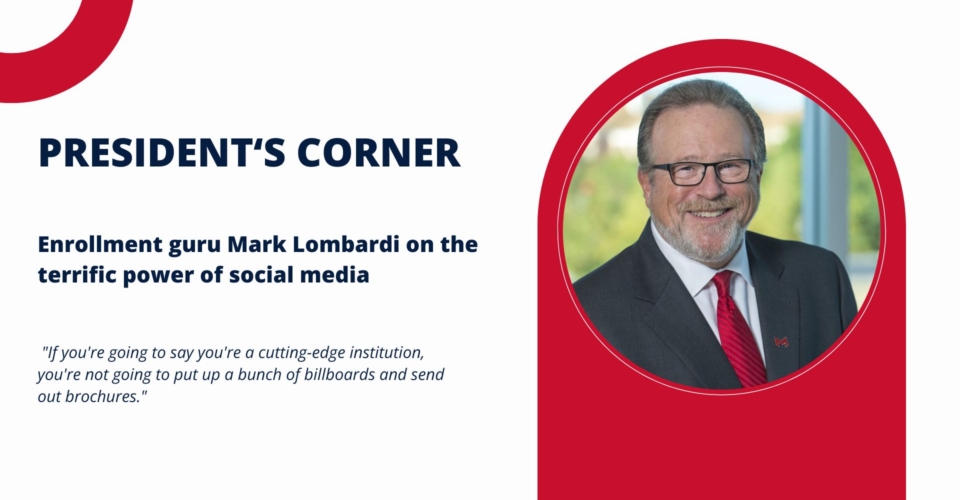In recent years, much attention has been directed to declining college enrollment and the growing public disconnection from higher education—and for good reason. But beneath these headlines lies a sneakier problem, one that’s easier to miss but just as troubling.
In 2022, the workplace trend of “quiet quitting”—the idea that some employees had quietly disengaged from their work—entered the zeitgeist. A similar phenomenon is now emerging in higher education. Students are silently disengaging from their studies.
A recent survey shed some light on this alarming trend. More than 40 percent of students admitted to purposely missing or avoiding an exam at least once. While it’s easy to blame such behavior on apathy or laziness, the reality is far more nuanced and concerning. The same survey found that 90 percent of students believe their mental health disrupts their ability to complete assignments or study.
One in 10 students said they experience such disruptions every day. Far from being disinterested in their education, these students are overwhelmed by the mounting stress of academic life. To re-engage students and ensure they can thrive, institutions need to confront the role mental health plays in shaping students’ experiences on their campuses.
More than three-quarters of college students now report regularly feeling moderate or high levels of stress, and a record number of students are experiencing anxiety, have symptoms of depression, or are considering suicide. According to data from the mental health platform Uwill, the causes of mental health challenges are complex—but the primary drivers include social isolation, loneliness, self-esteem issues, and academic concerns. This escalating mental health crisis can go easily unnoticed on many campuses, as only about one-third of students actively seek help.
More from UB: Revenue sharing: Some guidance as new NCAA era approaches
The result is a silent epidemic with real consequences—from skipped classes and delayed assignments to missed exams. Colleges cannot afford to ignore this quiet crisis. They must develop strategies to keep students engaged and re-engage those who have already drifted away. While campuses generally have counseling services and support programs in place, these resources are often underfunded or overstretched.
Institutions face significant challenges in recruiting health professionals, with existing staff experiencing burnout and counseling centers grappling with frequent turnover. But expanding access goes beyond hiring more counselors. It requires making telehealth services widely available, ensuring students can access care no matter where they are. Normalizing conversations about mental health is equally important, using peer-led initiatives to break down stigma and encourage students to seek support.
At the same time, institutions need to fundamentally rethink how they approach academic stress. Nearly half of students say tests or exams make them feel stressed or anxious often, almost always, or always. Colleges should foster an environment where students feel motivated to demonstrate their learning, not immobilized by the fear of failure. Resilience is not innate—it’s a skill that can and should be developed. Colleges can play an active role in helping students build that resilience by offering resources that teach effective stress management and time management techniques.
Addressing disengagement also requires colleges to create a culture of understanding. Policies that allow for greater flexibility with deadlines or offer alternative assessments can go a long way toward alleviating the pressure students feel. When students feel that their well-being is prioritized, they’re more likely to stay engaged with their education.
Faculty and administrators, meanwhile, should be trained to better recognize the signs of stress and anxiety and to respond with empathy. Many students already expect college employees to play an active role in supporting their mental health, with nearly half of students believing professors are responsible for helping them when they struggle with mental health challenges.
But while students see their instructors as frontline allies in navigating their mental health struggles, faculty often step into this role without the proper training or resources. Although roughly 80 percent of faculty members report having one-on-one conversations with students about their mental health, just half feel confident in their ability to recognize when a student is struggling.
Some institutions are already taking innovative steps. At the University of Tennessee, Knoxville, faculty members have found success using interactive learning tools to create more flexible, low-stakes assessment opportunities throughout their courses. In large lecture classes of 200 or more students, professors use regular knowledge checks and varied question formats to help identify struggling students early and adjust their teaching approach accordingly. This kind of ongoing, adaptive engagement helps reduce test anxiety while still ensuring students are mastering the material.
Higher education remains this country’s most powerful pathway to opportunity, but for too many students, the same ambition that fuels their drive to succeed can become an overwhelming barrier. Re-engaging these students demands that institutions meet them where they are, offer the support they need, and cultivate environments where they feel empowered to thrive. The mental health crisis may be quiet, but it is far from invisible. The stakes are too high for colleges to look away.









